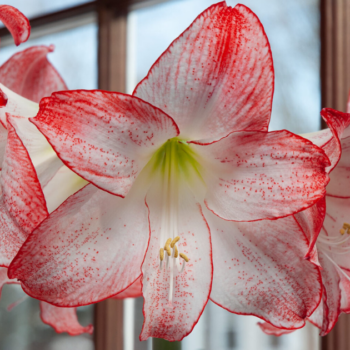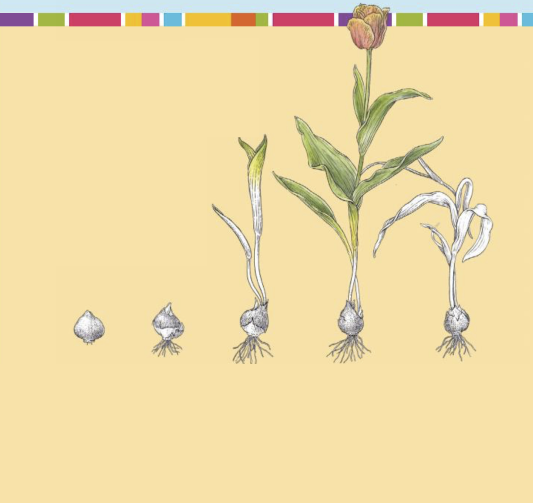The poet William Wordsworth once wrote of daffodils “dancing in the breeze,” and Shakespeare before him described “daffodils that… take the winds of March with beauty.” Biomechanists have determined that daffodils dance by design. In a paper entitled “Reorientation of Daffodil Flowers in Wind: Drag Reduction and Torsional Flexibility,” researchers concluded that daffodils turn their backs to the wind to reduce drag (Etnier and Vogel, 2000). They can do that thanks to their stems’ ability to twist and bend.
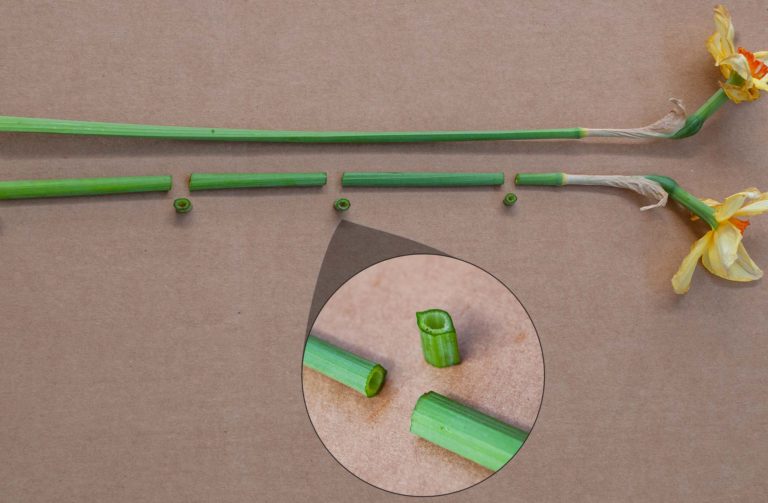
Daffodil stems are lenticular, or lemon shaped, in cross section, which helps the flowers turn away from the wind.
How Daffodils Outsmart the Wind
Daffodils carry their flowers at an angle of 60–90 degrees to the stem. This arrangement makes them vulnerable to damage if a strong gust hits them head on. But daffodils have a strategy for dealing with this problem. First, thanks to the material properties and lenticular shape of their stems, they are able to rotate away from the wind and lower their profile by bending. Second, daffodil flowers have the ability to reduce drag when their backs are turned to the wind. As wind intensity increases, the wind blows the petals around the cup, giving the flowers a streamlined shape.
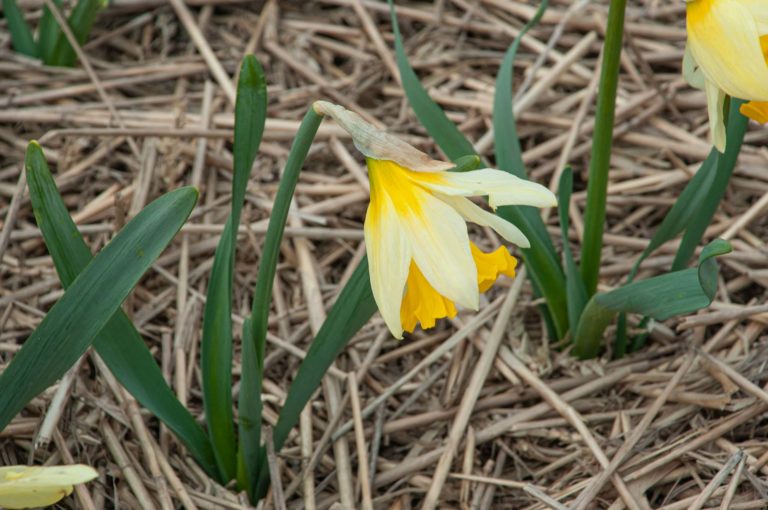
When hit by a strong gust of wind, daffodils reduce drag by twisting and bending, and their petals form a cone.
Dancing daffodils in a Wind Tunnel
To study how daffodils respond to wind, the researchers placed daffodils in a wind tunnel. As the researchers increased wind velocity, the flowers began to turn and the stems began to bend. Once wind speeds exceeded 30 mph, the wind turned the flowers a full 180 degrees away from its direction. Petal tips pointed downwind, forming a cone shape. The stems bent almost parallel to the wind’s direction (see the illustration below). When the researchers turned off the wind tunnel, the stems stood back up and the flowers turned back around and assumed their normal shape, as though nothing had happened.
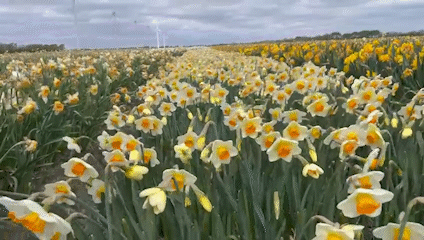
Outdoors on a breezy day, this back and forth can occur over and over, with each strong gust. And the daffodils, which look elegant and dignified when the weather is calm, appear to shimmy and dance to the music of the wind.
For the original article, point your web browser to the American Journal of Botany and then enter “daffodil” into the search field.

